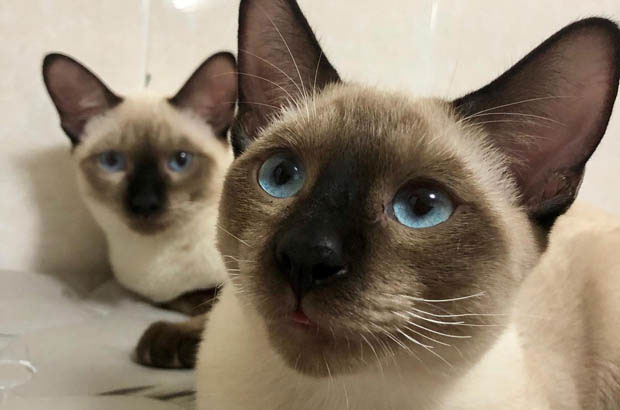In the wonderful realm of life sciences, genes are like mysterious codes hidden deep within organisms, determining the unique characteristics of every life form. For Siamese cats, their fascinating fur color changes and distinctive physiological features are closely linked to a gene named TYR in their bodies. This gene not only endows Siamese cats with a unique appearance but also harbors some lesser-known secrets.
In the cells of mammals, the TYR gene plays a crucial role, shouldering the important task of tyrosinase synthesis. Tyrosinase acts like a diligent “craftsman,” dedicated to promoting the synthesis and deposition of melanin. The activity of tyrosinase is like a precise switch: the higher its activity, the faster and greater the synthesis of melanin. However, the situation is different for Siamese cats. As a partially albino cat breed, the TYR gene in Siamese cats has mutated. This mutation causes defects in the synthesis of tyrosinase in their bodies. These defective tyrosinases cannot function at normal body temperature but can “wake up” and exhibit activity in areas where the skin temperature is below 33°C.

It is precisely this unique genetic characteristic that has created the iconic “point color” coat pattern of Siamese cats. The ears, part of the face, limbs, and tail of Siamese cats, due to their relatively low temperatures, become the “stage” where tyrosinase is active. In these areas, tyrosinase fully exerts its function, synthesizing a large amount of melanin, causing the fur in these parts to gradually turn black. Although the back skin is located on the main torso, it is exposed to the air most of the time, resulting in a slightly lower temperature. The tyrosinase here, although active, is relatively weak, so the fur color appears faintly black.
Temperature and age are like two “color – mixing masters,” subtly influencing the fur color changes of Siamese cats. As they grow older, the activity of tyrosinase in Siamese cats also changes. The older they get, the darker their fur color tends to be, transforming from a “light – toned” appearance to a “dark – toned” one. Seasonal changes also have a significant impact on the fur color of Siamese cats. In the cold winter, with the drop in temperature, tyrosinase becomes more active, and the fur color of Siamese cats becomes darker than in summer, as if they have put on a thick “black coat.” Regional differences are also reflected in fur color. The relatively cold climate in the north makes Siamese cats there darker in color compared to those in the warmer southern regions. These interesting changes bring countless surprises and joys to the owners of Siamese cats.
However, while the unique TYR gene mutation in Siamese cats endows them with charm, it also brings some potential problems. Melanin in the retina is a key element for maintaining normal vision. The defective tyrosinase caused by the mutated TYR gene may lead to a series of incurable vision problems, with crossed eyes and nystagmus being the most common. Although vision problems such as crossed eyes usually do not seriously affect the daily life of Siamese cats, this change in appearance still concerns many owners. Fortunately, not all Siamese cats are troubled by these genetic diseases. During the breeding process of Siamese cats, professional breeders will conduct strict screening to eliminate individuals with vision defects, thus reducing the probability of Siamese cats developing related genetic diseases.
Siamese cats are like artworks carefully crafted by nature. Their unique genes have created their charming appearance and interesting characteristics. Despite some potential health concerns, this has not diminished people’s love for them at all. Each Siamese cat is a unique individual, leaving a deep mark on human life in its own way, allowing people to experience the wonders of life while also reaping endless warmth and joy.
Leave a Reply